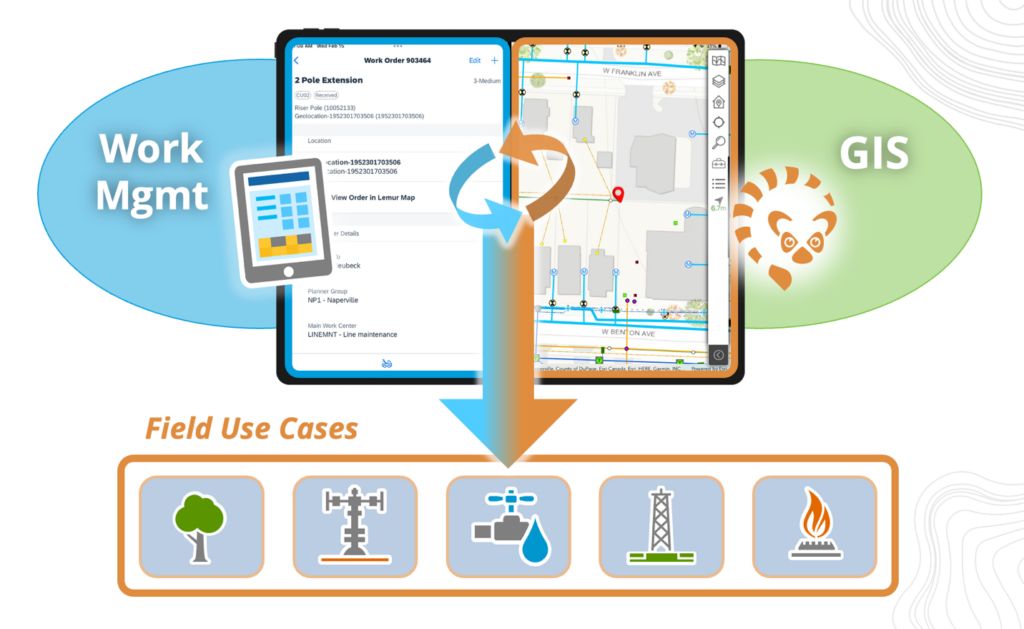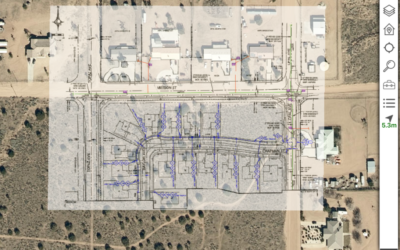Modern mobile mapping offers an enterprise approach that reduces complexity and risk
Asset-intense industries today have mounting pressures to reduce operational costs while increasing safety. IT departments push for simplicity, while business managers require data accuracy and powerful, easy-to-use tools for their workforce. Field programs struggle to leverage GIS and business systems while meeting their specialized workflow demands.
Leaders procuring systems to support field-to-office workflows face an increasing sea of options. Use-case-specific tools claim to solve the issue, then add cost and complicated data transfers between systems of record. This leads to inaccuracy and frustration by the staff using the tools.
Specialized point solutions tout low prices and tailored tools, then lead to risk exposure and high total cost of ownership in the form of middleware, manual entry, and data transfer headaches.
Whenever an app needs a system of record data, it must be transferred via middleware, spreadsheet import, or manual entry. For each of these data “handshakes,” the risk of errors and corrupt data increases. Multiply that by 50, a total app count for one large west-coast utility company, and then imagine the results. The full collection of apps leads to amplified cost, maintenance work, and bloated architecture. This leaves business managers and program owners feeling stressed and overwhelmed by IT and reporting requirements.
The problem with point solutions:
Middleware and ETL = increased costs
Point solutions require extra software in the form of middleware or extract/translate/load (ETL) tools that pull data from the enterprise system and transfer it to the point solution. These extra tools require extra license fees, monitoring, and maintenance to keep them running well.
Complicated tools = data errors
Point solutions that favor one platform often require additional skills and staff hours. This can result in extensive training or on-the-job guesswork. Staff may feel frustrated or inadvertently enter erroneous data if the user misuses the tool.
Spreadsheets and manual entry = poor efficiency
Updating the back office systems usually requires spreadsheet imports or manual entry. This wastes people’s time and introduces data inaccuracies. It also creates a lag time for data updates when physical paperwork sits on people’s desks.
Data handshakes = data risk
Every data handshake creates data fidelity risk. These “handshakes” happen during ETL extraction, spreadsheet or manual export/import, and incorrect data entry. With over 50 apps and thousands of transactions per day, the multi-app situation can erode data accuracy and people’s trust in the system of record.
CIOs and compliance officers crave simplified IT landscapes that reduce operational and compliance risk and lower costs. They desire an architecture with fewer numbers of applications and vendors, less ETL, the ability to see a complete operating picture, and the ability to report rapidly on operations with greater confidence.
Business unit leaders need intuitive mobile experiences that minimize change management and training and support operational efficiency and the particulars of the people, equipment, contracts, and schedules they employ. They strive for a happy, efficient, comprehensive workforce.
Reduce cost and risk with an enterprise approach
The ideal solution that solves point solution challenges has a simple architecture, lower application counts, and a wide breadth of functionality that supports all workflows yet remains easy for field workers to use. It empowers business managers to provide tools that their team needs for all use cases and alleviates the costs and maintenance stress faced by IT and program managers. And it integrates seamlessly across the enterprise, achieving workflow fusion and reducing operational risk.
Modern mobile mapping solves these challenges. It takes a broad, enterprise approach to field workflows and blends GIS-native, easy-to-use tools with your existing work and enterprise asset management systems. It eliminates the risk associated with data handshakes and cuts software costs related to middleware and high app counts. Modern mobile mapping solves virtually all field workflows and keeps data in the right system of record. It provides an enterprise approach, meaning a single-app solution that keeps data transactions within its native environment.
Gain a complete solution with Lemur
Lemur, combined with your work management and EAM systems of choice, is a complete mobile solution, including asset installation, management, inspections, or maintenance. Work management plus EAM provides the baseline core business and asset management capabilities integrated with Lemur without ETLs. Lemur provides intuitive, native Esri GIS tools and data to field workers with pre-built, configurable integration to your work management platform that minimizes training and supports a single operating picture in the field and the office.
Lemur plus work management enables:
- A single, unified view of assets, work, environmental, political, and other needed information
- Offline GIS data sync optimized for high-volume data
- Native Esri technology to view, edit, and create GIS data in the field
- Direct integration back to work management for creating & editing orders
- Workflow and configuration-focused menus, actions, and capabilities

Lemur can replace dozens of point solutions a utility may have deployed for asset installation, management, inspections, or maintenance. Designed specifically for asset-intensive industries, Lemur delivers virtually any field asset workflow. Lemur cuts costs in training, vendor management, licensing, and operations.
The complete enterprise solution you need
Business managers need data accuracy. CIOs need an architecture that makes sense. Field workers need easy-to-use toolsets that are focused on their workflow and robust enough to handle the edge cases. Lemur plus work management answers these demands, enabling complete, intuitive workflow coverage without the risk-laden complexity of ETLs and manual work. The engineering approach behind Lemur’s design empowers unique, configurable, focused workflows for field teams and direct data updating to the system of record for the back office and management. Designed for offline-first situations, Lemur can handle any connectivity environmental situation that comes up in the field.
Enable your workforce with modern mobile mapping and workflow fusion by combining Lemur with work management and EAM. Keep your enterprise clean, keep your field workflows simple with Lemur.
***
Want to avoid the complexity and risk of using multiple point solutions for your field services? Discover how enterprise mobile mapping approach delivers a complete, integrated approach.


